The best budget telephoto lenses for Canon, Nikon, Sony and more in 2025
We pick the best budget telephoto zoom lenses for your camera system – big magnifications, small outlays!
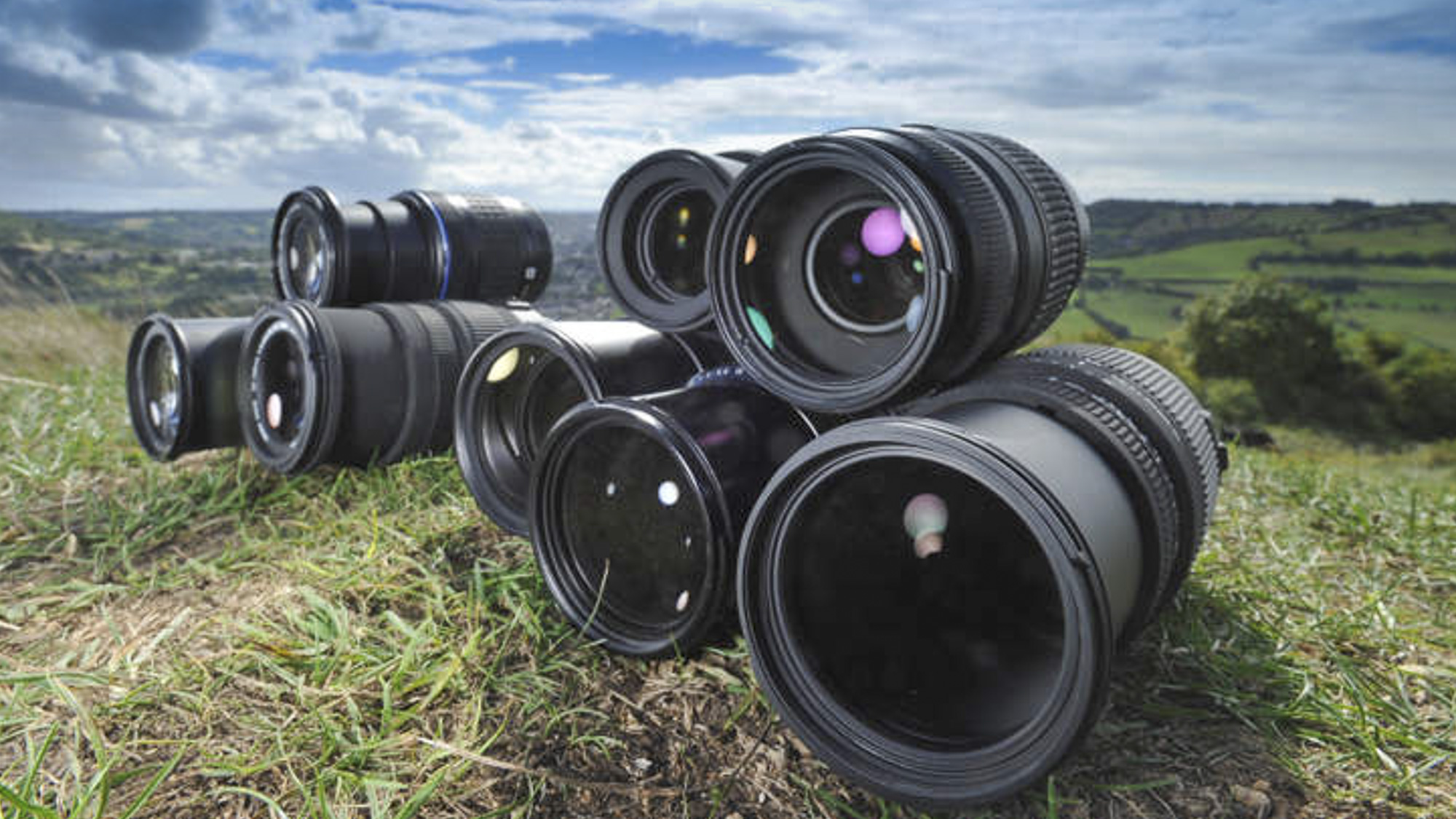
The best budget telephoto zoom lenses allow you to get some close the distance on your subjects, without paying over the odds. Telephoto lenses – meaning lenses with a longer focal length that provide a zoomed-in perspective – have a reputation for being expensive, but there are loads of budget options out there, whether you use a DSLR or a mirrorless camera.
Telephoto lenses are well-known as the preferred tools of wildlife and sports photographers as they let you fill the frame with a subject in the distance. However, they have other uses too, and many architecture and landscape photographers like to keep a telephoto in their roster for the striking, tightly-cropped perspective one can create. For many new photographers, a telephoto is the first new lens they buy to supplement the kit lens that came with their camera.
Some of the best telephoto lenses can cost thousands of pounds so if you're just starting out in photography, chances are you're after something more bank account friendly. Most budget telephoto lenses tend to be zooms lenses for APS-C cameras, they generally have a plastic finish making them lighter and more compact than full-frame equivalents and although some are compatible with full-frame cameras, some are designed specifically for APS-C cameras and will result in vignetting on bigger sensors.
We've included a mix of camera manufacturers' own lenses and third-party alternatives in this guide, but either way, all of them are lenses we recommend as being worth their price tag. We've also divided our list up by camera system, including Canon, Nikon, Sony, Pentax, Micro Four Thirds, and Fujifilm. So, let's get to the list of the best budget telephoto lenses you can buy right now.
The best budget telephoto lenses
Why you can trust Digital Camera World
Canon
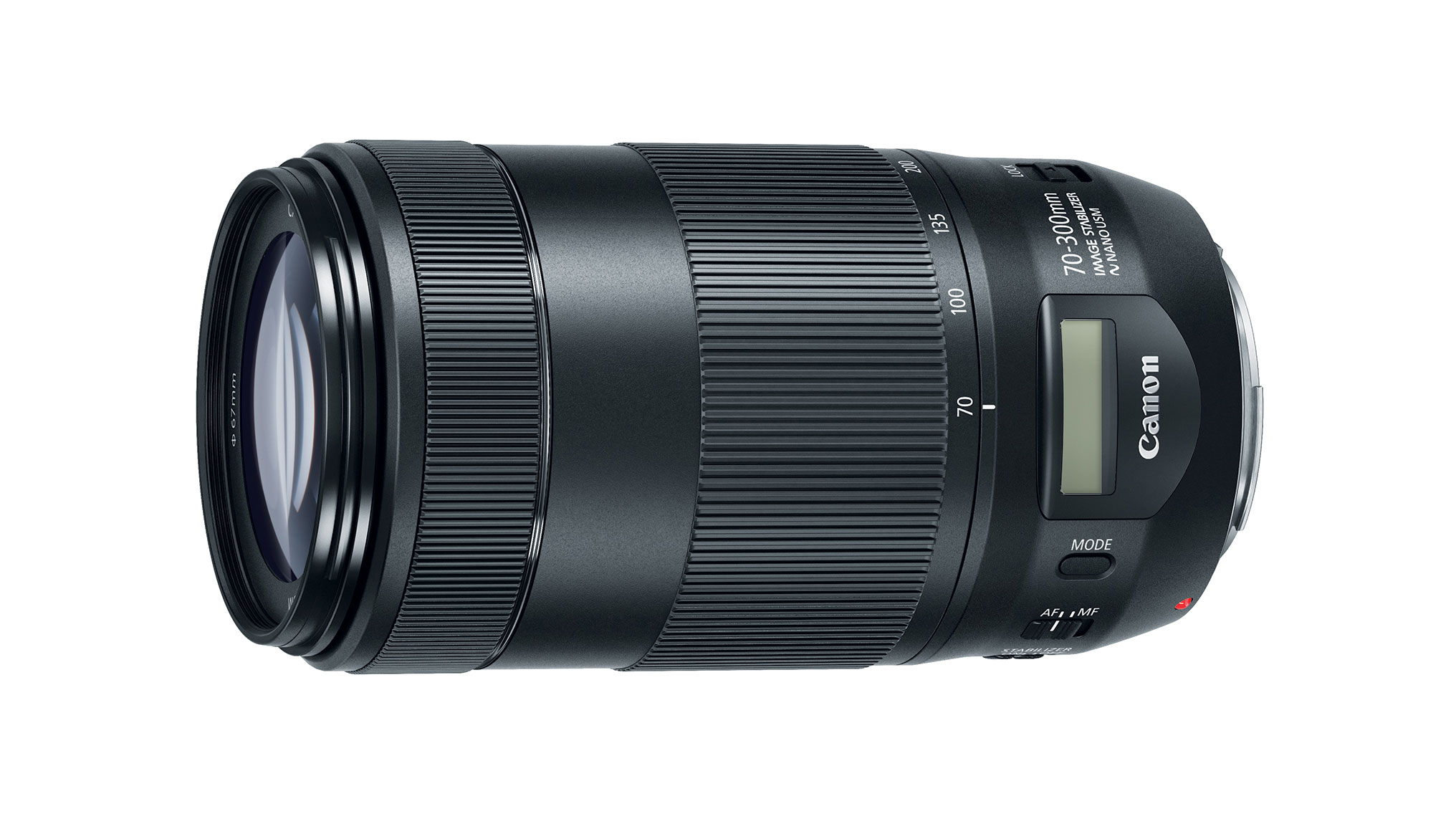
Specifications
Reasons to buy
Reasons to avoid
This is one of the best budget telephotos we've reviewed, and is an excellent choice for practically any Canon user. It works with both APS-C and full-frame DSLRs, meaning it's a viable choice whatever stage of your photographic journey you're on, and even though it's an EF lens, it'll work seamlessly with EOS R or EOS M mirrorless cameras via the relevant adapters.
Thanks to the Nano USM autofocus system, you've got fast and accurate focusing at your fingertips, and as we noted in our review, there's a general step up in performance compared to previous versions of this lens. The 4-stop stabilisation is hugely useful, and the multi-mode info display gives you a quick readout on things like focus distance, depth of field and camera shake.
The handling is excellent, sharpness is commendable, and the price is right. This is quite simply one of the best budget telephoto lenses that Canon users can buy.
Canon EF 70-300mm f/4-5.6 IS II USM full review
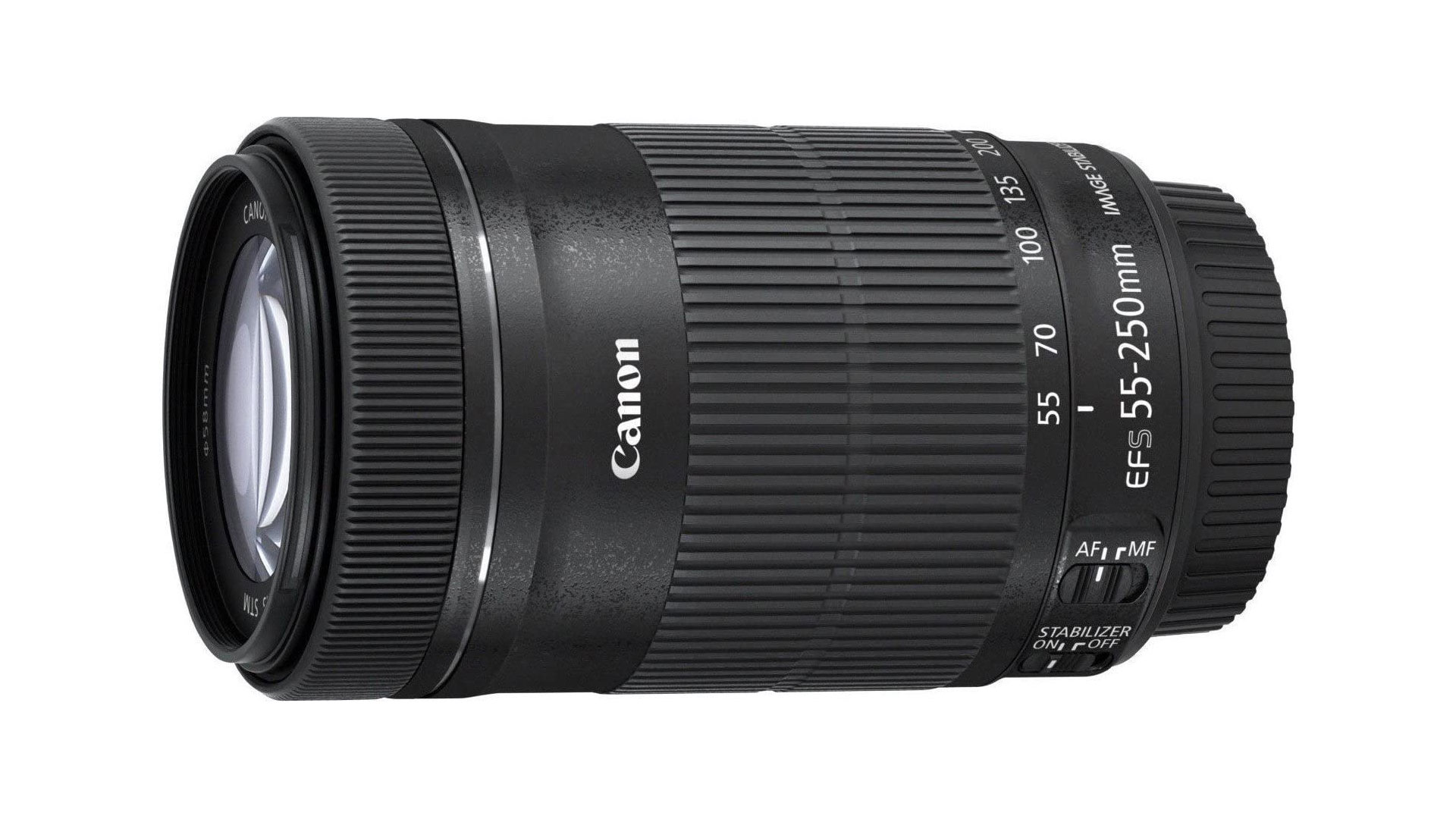
Specifications
Reasons to buy
Reasons to avoid
About half the price of Canon’s full-frame 70-300mm tele zoom, this EF-S optic for APS-C format bodies is smaller, lighter and more affordable. It gives a powerful effective reach of 400mm (in 35mm equivalent terms) at the end of its zoom range, while at the short end, it picks up where the typical 18-55mm kit lens leaves off. An upgrade over the previous IS II model, the STM lens features redesigned optics and a stepping motor for powering autofocus, instead of a basic electric motor.
When we took this lens to our testing bench for a full review, we admired how the stepping motor enables smooth and virtually silent autofocus transitions that are well suited to both stills and video capture. The optical image stabilizer also performs well, with an effectiveness of about 3.5 stops. Handling is an improvement over previous generations of the lens, in that the focus ring no longer rotates during autofocus.
Canon EF-S 55-250mm f/4-5.6 IS STM full review
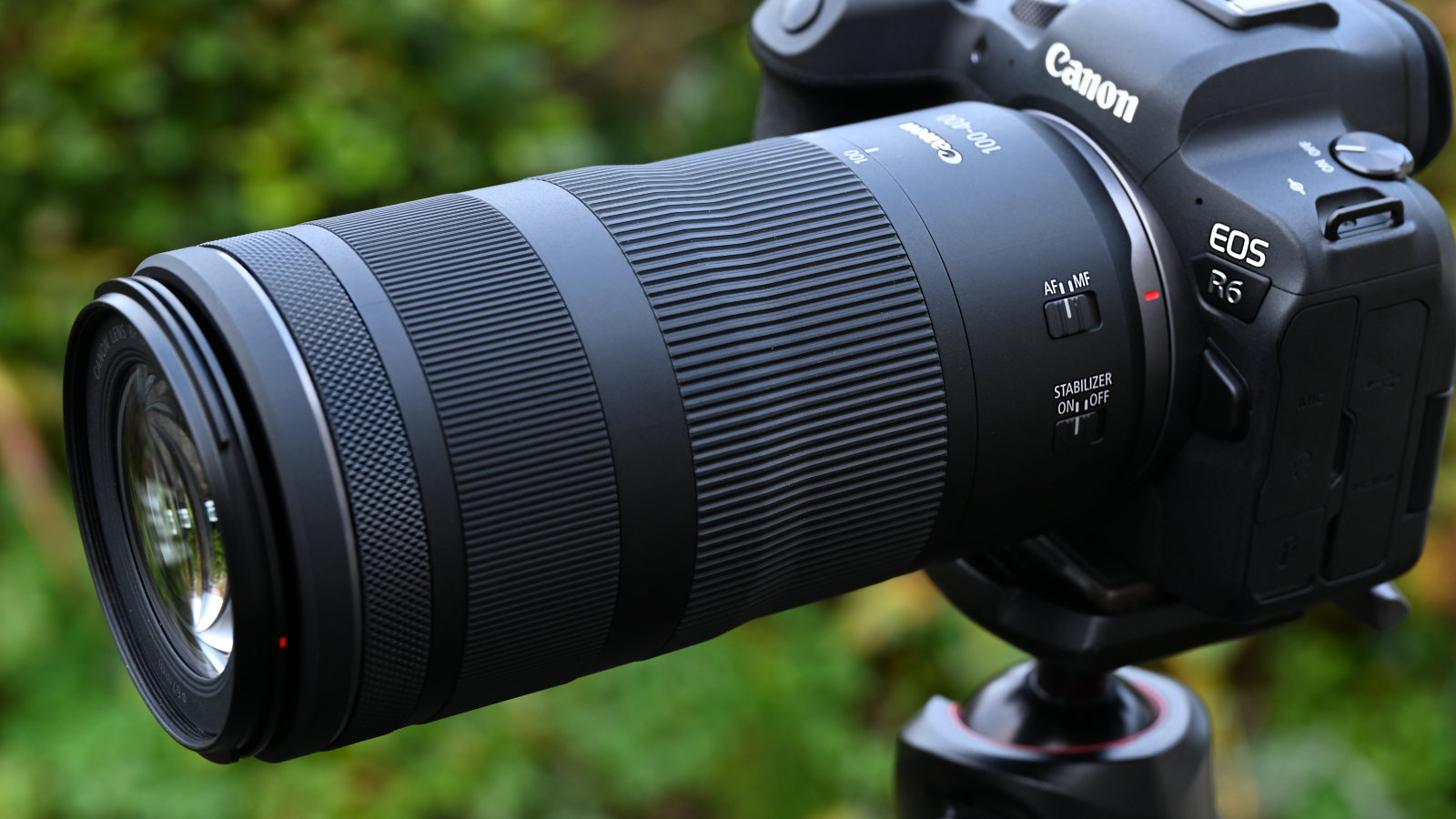
Specifications
Reasons to buy
Reasons to avoid
Budget telephoto lenses for EOS R-series mirrorless camera's aren't exactly commonplace, so the RF 100-400mm is as close as you'll get. With its 100mm shortest focal length, it's a little narrower than most options on this list, but if you're pairing it with a 24-70mm standard zoom, the missing 30mm between the two lenses isn't necessarily a deal-breaker. The upside is you get noticeably more 'reach' at the long end - 400mm - compared with the more typical 70-200/70-300mm alternatives.
Given it's straying into super-telephoto territory, the RF 100-400mm f/5.6-8 IS USM is actually fairly compact and lightweight - it looks and feels very much like shooting with a classic 70-300mm lens. Autofocus is super-fast, image stabilization is highly effective and image quality is impressive in all respects, with the only caveat that sharpness drops off noticeably when combining close focusing distances with the longest zoom setting. The aperture rating of f/8 at the long end of the zoom range might be a bit slower than some might like, but that’s the price you pay for the conveniently downsized design.
Canon RF 100-400mm f/5.6-8 IS USM full review
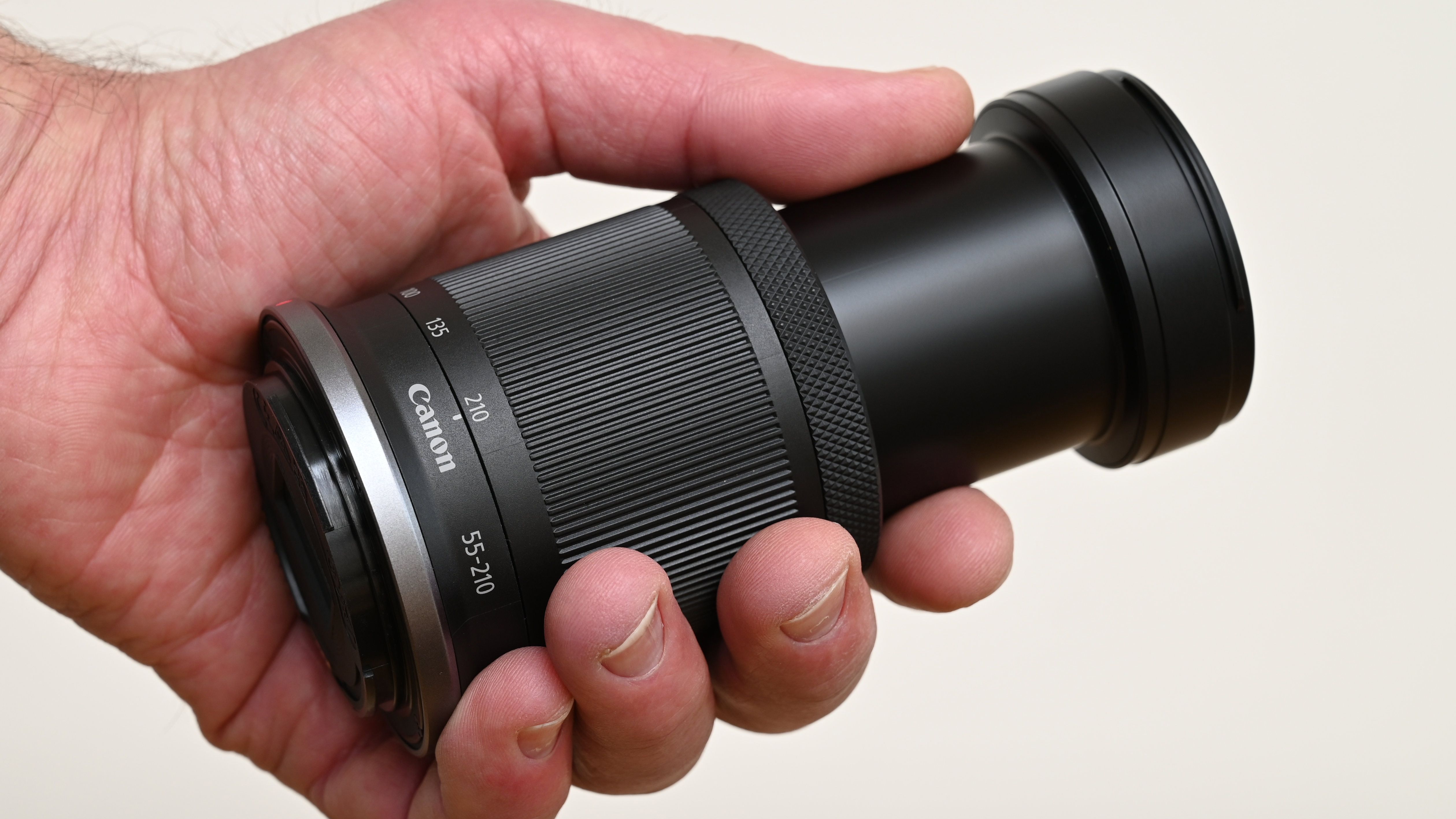
Specifications
Reasons to buy
Reasons to avoid
Native APS-C lenses for the Canon RF mount are still relatively rare, but if you're after a well-priced, travel-friendly telephoto, Canon has you nicely covered with the RF-S 55-210mm. At just 135mm long and 270g, it's well suited to small, lightweight cameras like the EOS R50 and R100. The 55-210mm focal range equates to 88-336mm in full-frame terms - impressive stuff for a lens so small it'll fit in the palm of your hand. You even get fast autofocus and highly effective optical stabilization. The maximum available aperture is fairly slow here, but the high ISO performance of cameras like the R50, R7 and R10 mean a narrow aperture really isn't a deal-breaker like it might have been in years past.
Read more: Canon RF-S 55-210mm f/5-7.1 IS STM review
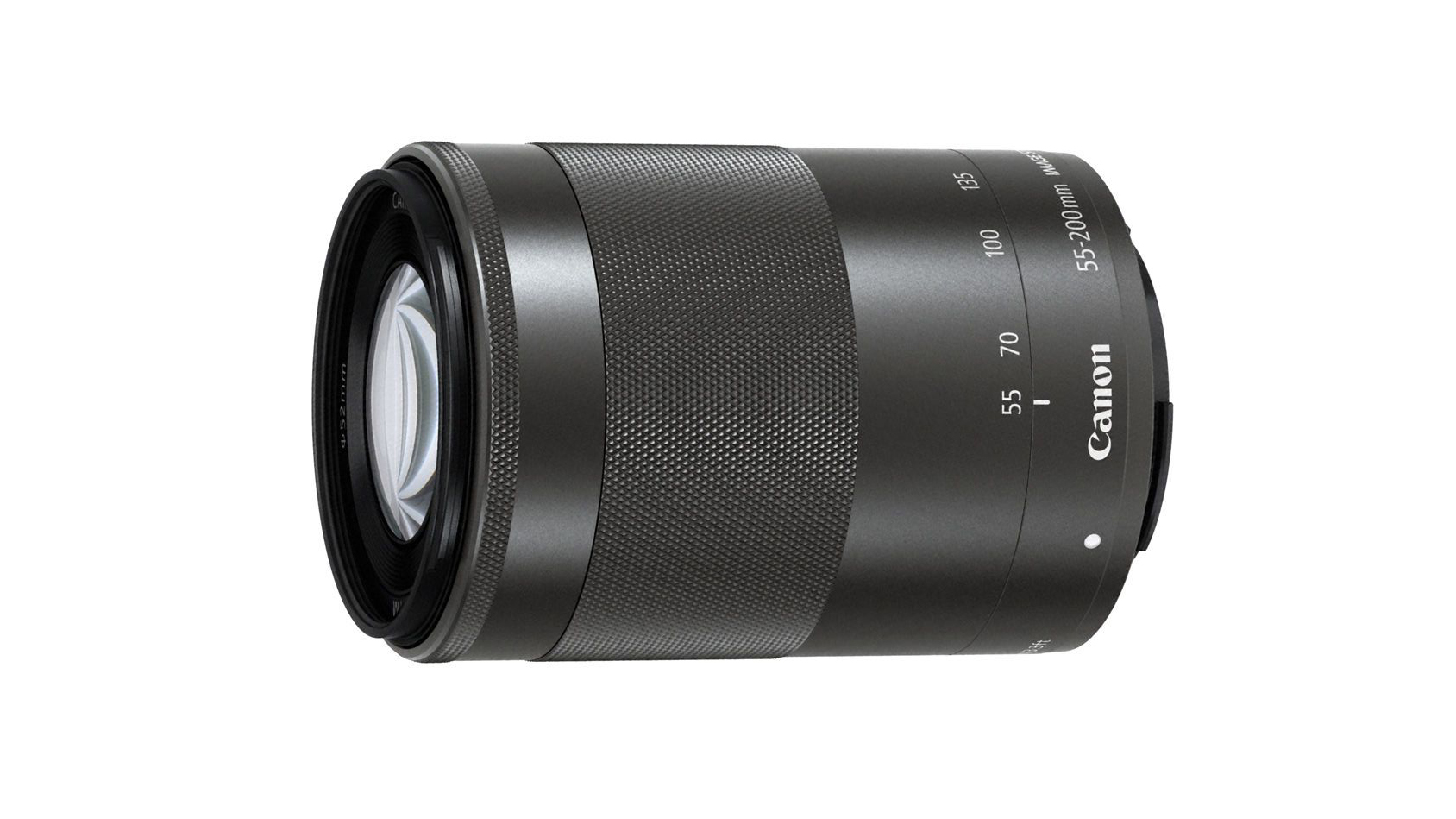
Specifications
Reasons to buy
Reasons to avoid
If you've got an EOS M6, M50 or other EOS M series camera, your telephoto zoom options are pretty limited. Luckily, the Canon EF-M 55-200mm f/4.5-6.3 IS STM is a great option for those on a budget. We recently reviewed this lens, and were greatly impressed with the balance of a lightweight build and an effective, versatile shooting range.
The equivalent range of 88-320mm, which is due to the cropped APS-C sensor of the cameras it can be mounted on, might not be a match for some of the other 70-300mm lenses out there, but should be good enough for most shooting situations. Focusing is quiet and refined thanks to the STM motor, while the image stabilisation system is a welcome touch to help reduce camera shake. A solid choice if you're looking to get those frame-filling shots on a EOS M series camera.
Canon EF-M 55-200mm f/4.5-6.3 IS STM full review
Nikon
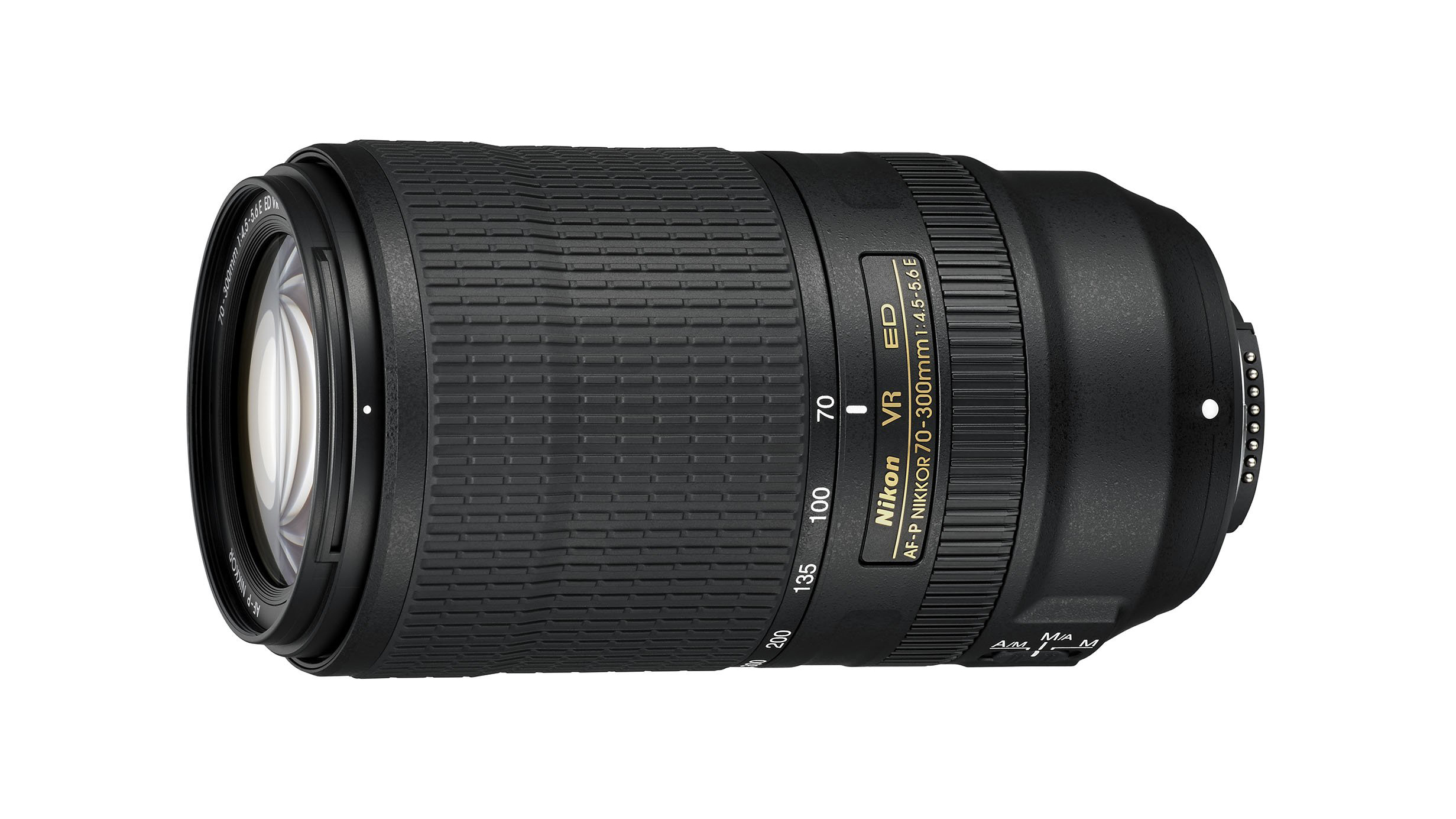
Specifications
Reasons to buy
Reasons to avoid
Nikon makes an entirely adequate DX format 70-300mm VR lens but this one is of much higher quality, from its weather-sealed construction to the performance of its autofocus and VR (Vibration Reduction) systems, along with super-sharp image quality throughout the entire zoom range. Another bonus is that, should you upgrade from a DX format camera to a full-frame FX model, you can still use it without the restrictions of ‘crop’ mode. Indeed, it works really well on full-frame Z-series mirrorless cameras via an FTZ mount adapter. The AF-P ‘Pulse’ stepping motor autofocus system is blazingly fast and incredibly silent in operation, while the advanced VR system has switchable normal and ‘Sport’ modes. The former includes automatic panning detection while the latter applies VR only during exposures. This makes it easier to track erratically moving objects in the viewfinder, and avoids any slowdown in high-speed continuous drive shooting.
Nikon AF-P 70-300mm f/4.5-5.6E ED VR full review
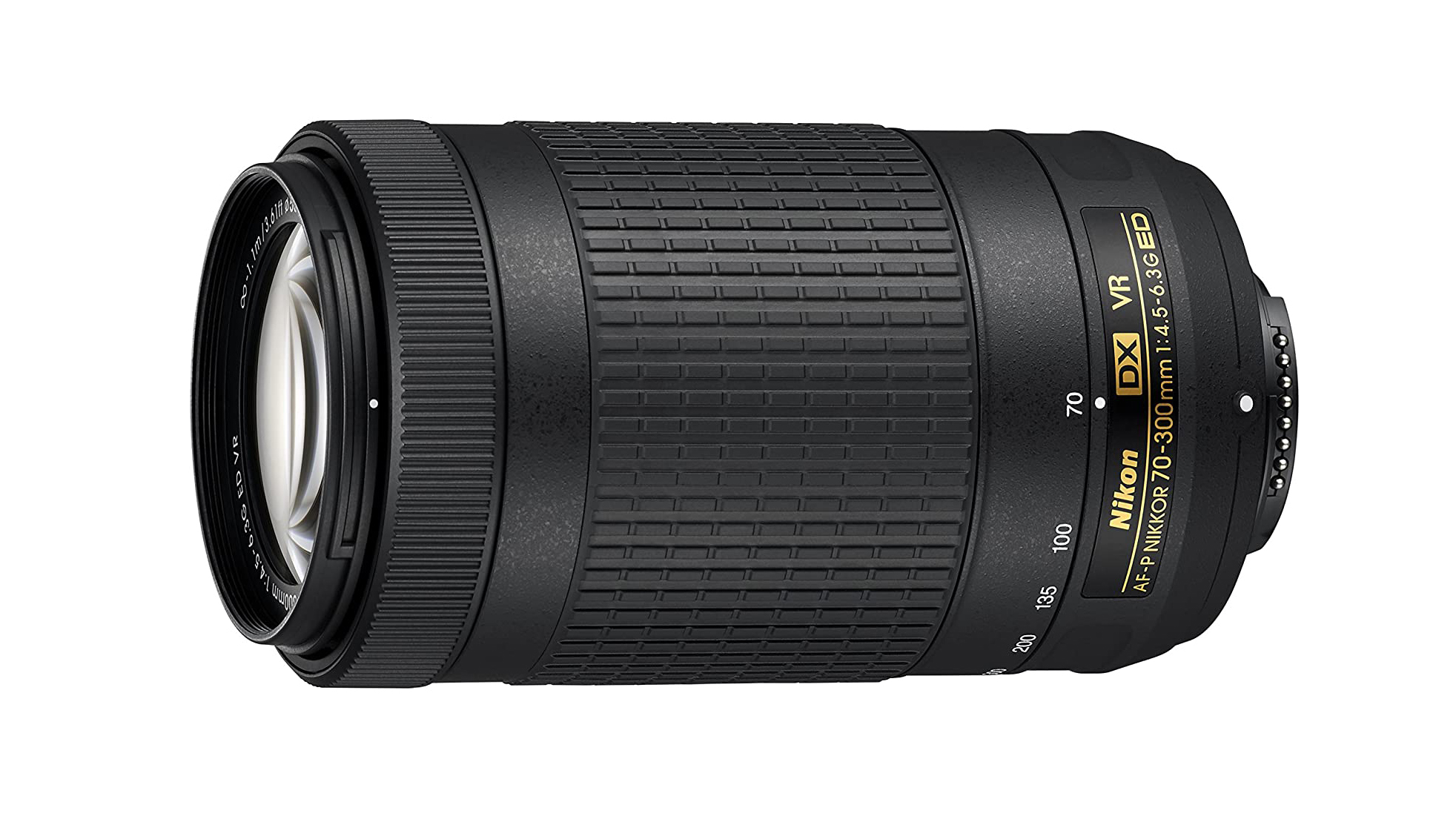
Specifications
Reasons to buy
Reasons to avoid
Nikon is the latest manufacturer to jump on the stepping motor bandwagon: it’s used for autofocus in this AF-P (Pulse) lens. It’s available with or without VR (Vibration Reduction), and the edition without stabilization is a little cheaper to buy. Both are fully compatible with D3300, D3400, D3500, D5300, D5500, D5600 and D500 bodies, but completely incompatible with many older Nikon cameras like the D7000, where autofocus and even manual focusing are unavailable. The 300mm focal length and 1.5x crop factor of Nikon’s DX format gives an effective reach of 450mm. It’s physically big and heavy, and relies on a camera menu for switching off stabilization. In our lab tests, the non-VR version of the lens proved slightly sharper than the VR edition. However, the four-stop stabilizer is particularly effective in hand-held shooting, with the VR lens yielding more consistently sharp images.
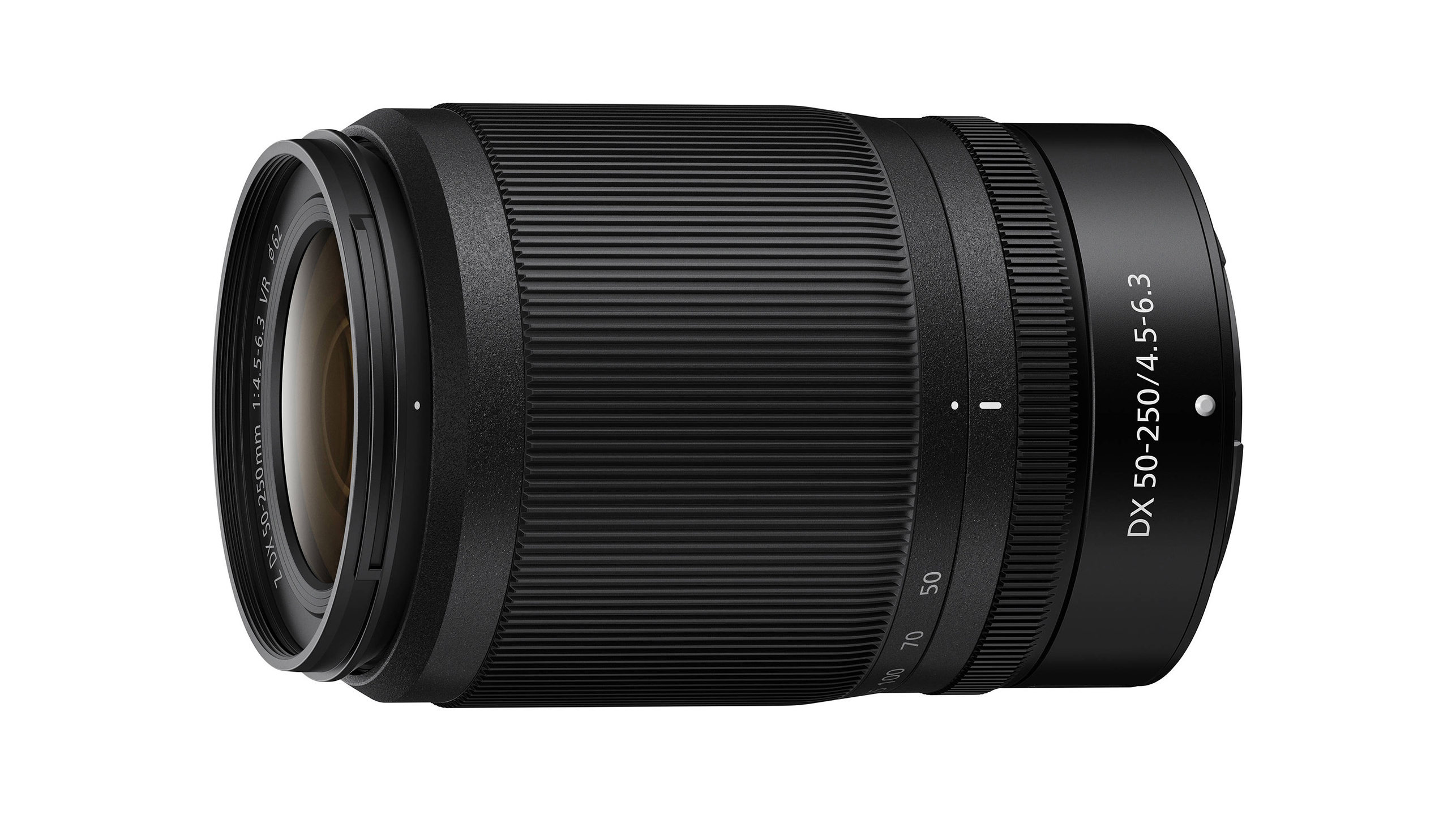
Specifications
Reasons to buy
Reasons to avoid
Available on its own or as part of the Z 50 twin-lens kit, this telephoto lens has an effective 75-375mm zoom range in full-frame terms. Ideally matched to the Z 50, it has a compact and lightweight build. As with the companion Z 16-50mm standard zoom, downsizing and weight reduction are enabled by a retractable design, a relatively narrow f/6.3 at longer zoom settings, and the use of a plastic rather than metal mounting plate. Unlike Nikon’s full-frame mirrorless cameras, the Z 50 has no in-body stabilization, so the inclusion of 5-stop optical VR is particularly welcome. Despite its light weight and lack of weather-seals, the build quality and handling of the lens is very good. Autofocus is fast and highly accurate, the multi-function control ring works well and image quality is impressively sharp, even when shooting wide-open.
Sony
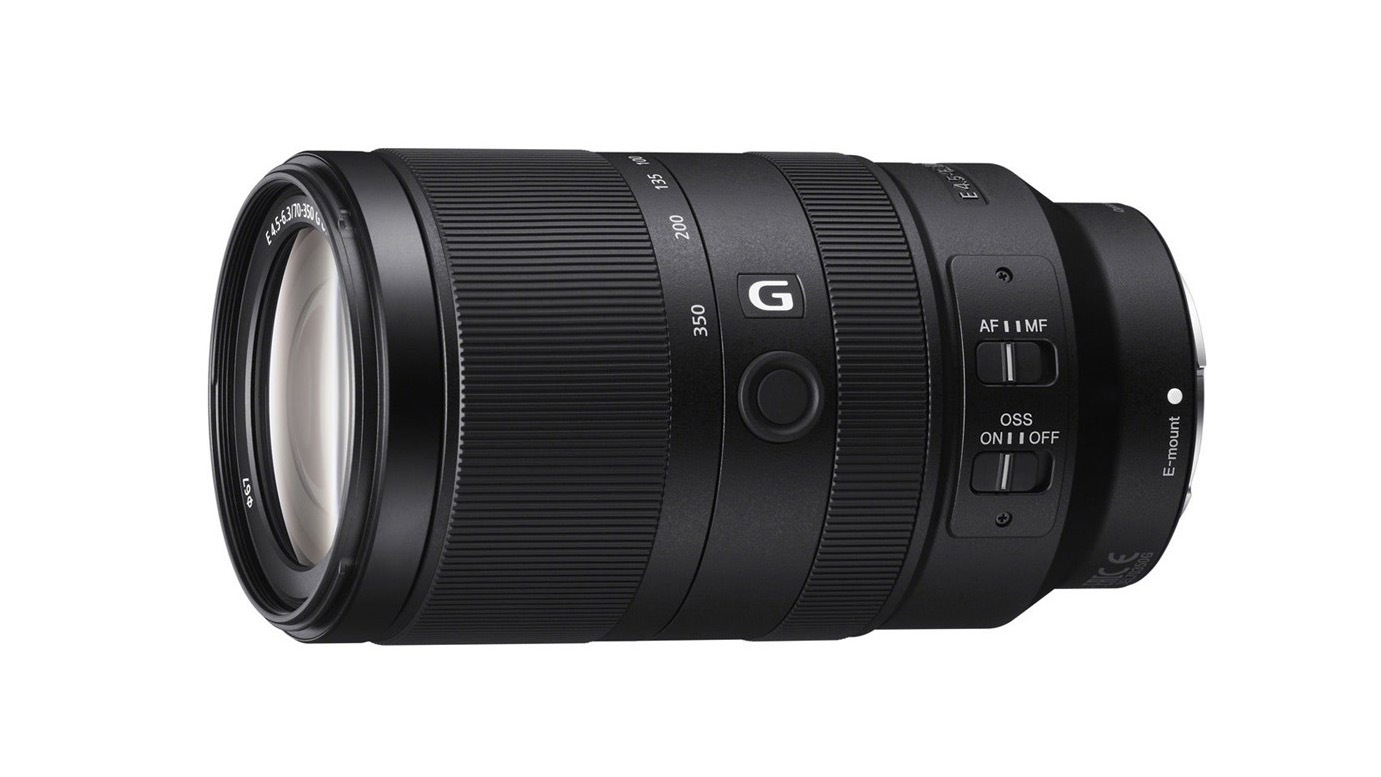
Specifications
Reasons to buy
Reasons to avoid
Sony's E 70-350mm f/4.5-6.3 G OSS is a really welcome addition to its lens line-up. It's fair to say that telephoto zooms have been a bit thin on the ground for Sony, but this 70-350mm lens looks to change that. Designed specifically for APS-C format Sony E-mount cameras, where it has a ‘super-telephoto’ 5x zoom range equating to 105-525mm on a full-frame body, it's an incredibly versatile optic suited to a range of subjects. However, itt does mean though that if you're an A7 or A9 series shooter, this lens isn't compatible. The good news though is that this 70-350mm doesn't disappoint on an A6000 series cameras - it delivers big on performance, is refreshingly small and lightweight for handheld shooting, and comes complete with a powerful optical stabilization system.
Micro Four Thirds

Specifications
Reasons to buy
Reasons to avoid
Boosted by the 2x crop factor of the Micro Four Thirds system, this 75-300mm lens delivers a mammoth effective zoom range of 150-600mm. Its build quality feels a little more robust than in some of the other lenses on test, with a metal rather than plastic mounting plate. A stepping motor enables quick yet smooth autofocus transitions, along with electronically coupled manual focusing. There are no on-board switches or controls, other than the zoom and focus rings. As with the Pentax lens above, this lens has no optical image stabilization system, instead relying on in-camera, sensor-shift stabilization. On an Olympus OM-D E-M5 Mark II body, image stabilization equates to four stops, so the lack of an optical stabilizer isn’t a concern. Autofocus is fast and accurate, and manual focusing is precise. Image quality is pleasing, although sharpness at the long end of the zoom range proved disappointing in our tests.
Olympus M.Zuiko 75-300mm f/4.8-6.7 II review
Read more: Best Micro Four Thirds lenses
Fujifilm

Specifications
Reasons to buy
Reasons to avoid
With a smaller zoom range and Fujifilm’s 1.5x crop factor, the maximum effective reach of this lens is a more modest 345mm (in 35mm terms). With the usual stepping motor autofocus, manual override of autofocus and fully manual focusing are available via an electronically coupled ‘fly-by-wire’ focus ring. Focus modes and operation of the 3.5-stop optical image stabilizer are selected via camera menus; the lens lacks control switches. The mounting plate is plastic rather than metal, and the overall build feels lightweight. Sharpness and contrast are good throughout most of the zoom range, even at the widest available apertures. Autofocus speed is pretty good under decent lighting, but coupled with our Fujifilm X-T10 body, we had a lot of autofocus hunting and false positives for focus acquisition in dull conditions.
Fujinon XC50-230mm f/4.5-6.7 OIS II review
How we test lenses
We test lenses using both real world sample images and lab tests. Our lab tests are carried out scientifically in controlled conditions using the Imatest testing suite, which consists of custom charts and analysis software that measures resolution in line widths/picture height, a measurement widely used in lens and camera testing. We find the combination of lab and real-word testing works best, as each reveals different qualities and characteristics.
Get the Digital Camera World Newsletter
The best camera deals, reviews, product advice, and unmissable photography news, direct to your inbox!
Phil is the Managing Editor of Top Ten Reviews, and is a former Editor of Techradar's camera channel. He is an accomplished photographer, and specializes in shooting cycling and fast cars.

